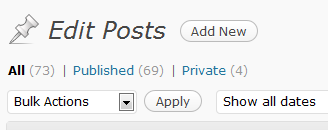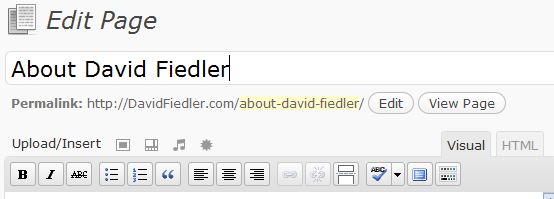At some point in every web developer’s career, one sits down, breathes a heavy sigh, and gets the feeling “I’ve done this all before, and too many times”. Whether you work internal to a company, as a freelance developer, or just for your own network of sites, eventually the 80/20 rule hits you. You know, the one that has many corollaries, but in this case means “80% of the work you do on websites is virtually the same stuff, over and over again”.
Wouldn’t it be nice instead to let someone else do much of that work and support, and save your pounding brain for the creative stuff that’s different every time? That thought hit me a few years ago, when I realized that even though all my websites were entirely different, I could design, code, and maintain them all with an open-source Content Management System (CMS). I did some serious research, such as implementing one website using PHP-Nuke, Mambo, Joomla, and finally WordPress.
I chose WordPress as my general-purpose framework, even though it’s theoretically a blogging platform, for a number of reasons. First of all, it’s backed by a company, yet still has a large number of independent contributors. This is probably the best way of keeping code up to date and viable commercially, while still using the Open Source model. New features, bug fixes, and security patches are thus released relatively often, and it doesn’t hurt that you can now update WordPress with a single click. Secondly, there are a phenomenal number of freely available, high quality themes and plugins that allow you to easily customize not only the look and feel, but also the functionality of your WordPress site. Finally, the total interoperability of WordPress with other platforms is second to none, so your site will be able to handle everything from Google Maps to SEO to AdSense to iPhone capability from day one. Don’t believe it? That’s why I’m here to teach you how to do it all.
Let’s start with the basics. You can set up a WordPress blog free, but since you’re a developer, you want a WordPress-based website, not simply a blog. At minimum, you’ll need access to a web server with PHP 4.3 and MySQL 4.1.2, and then you just download the code, edit one configuration file, and upload it to your server. I’ve heard a lot of software companies make outlandish claims, but believe me, the WordPress people are not exaggerating…when they talk about “five-minute installation”, they are actually leaving you an extra 3 or 4 minutes for coffee! Using a web hosting provider that supports cPanel makes things even easier (once you know your way around cPanel, that is), but if you know the database login information for MySQL on your server, you’re pretty much already done.
Once you’ve successfully installed WordPress, make sure you copy the admin account login name and password (they will even generate a good one for you). You’ll first find yourself at the Dashboard:

Most of the functions and technical menus are on the left sidebar. Explore the user interface a bit. WordPress comes with a single sample blog post (Posts/Edit); you should add a few more, not just to get the feel of how it’s done, but also to fill up the page with text and posts, so that you’ll better be able to see how different themes change the look of the page.


And “page” is the key word here, because pages are the secret key to getting WordPress to do what you want (assuming you want more than just a blog). Using the WordPress page feature, you can create and name static pages easily–using either the built-in WYSIWYG editor or raw HTML–while remaining within the WordPress framework with all of its advantages.

Once you’ve created some posts and pages (use Lorem Ipsum if you’re in a hurry), you can proceed to finding yourself a nice theme. As I mentioned in a previous article, you can save a lot of time when picking themes by deciding what function you want the theme to serve. There are themes already optimized for things like photo galleries, e-commerce, and SEO, so search for tags or keywords that will help you do what you want. WordPress even has a new search interface for this very purpose. And when you do get a list of possible themes, take a careful look at how well other users rated them, because that will give you a good hint of how much trouble people had trying to use them!













